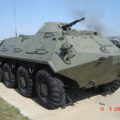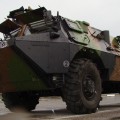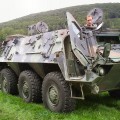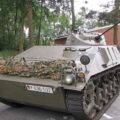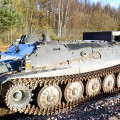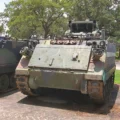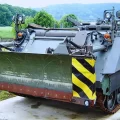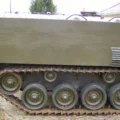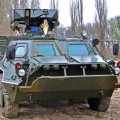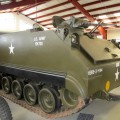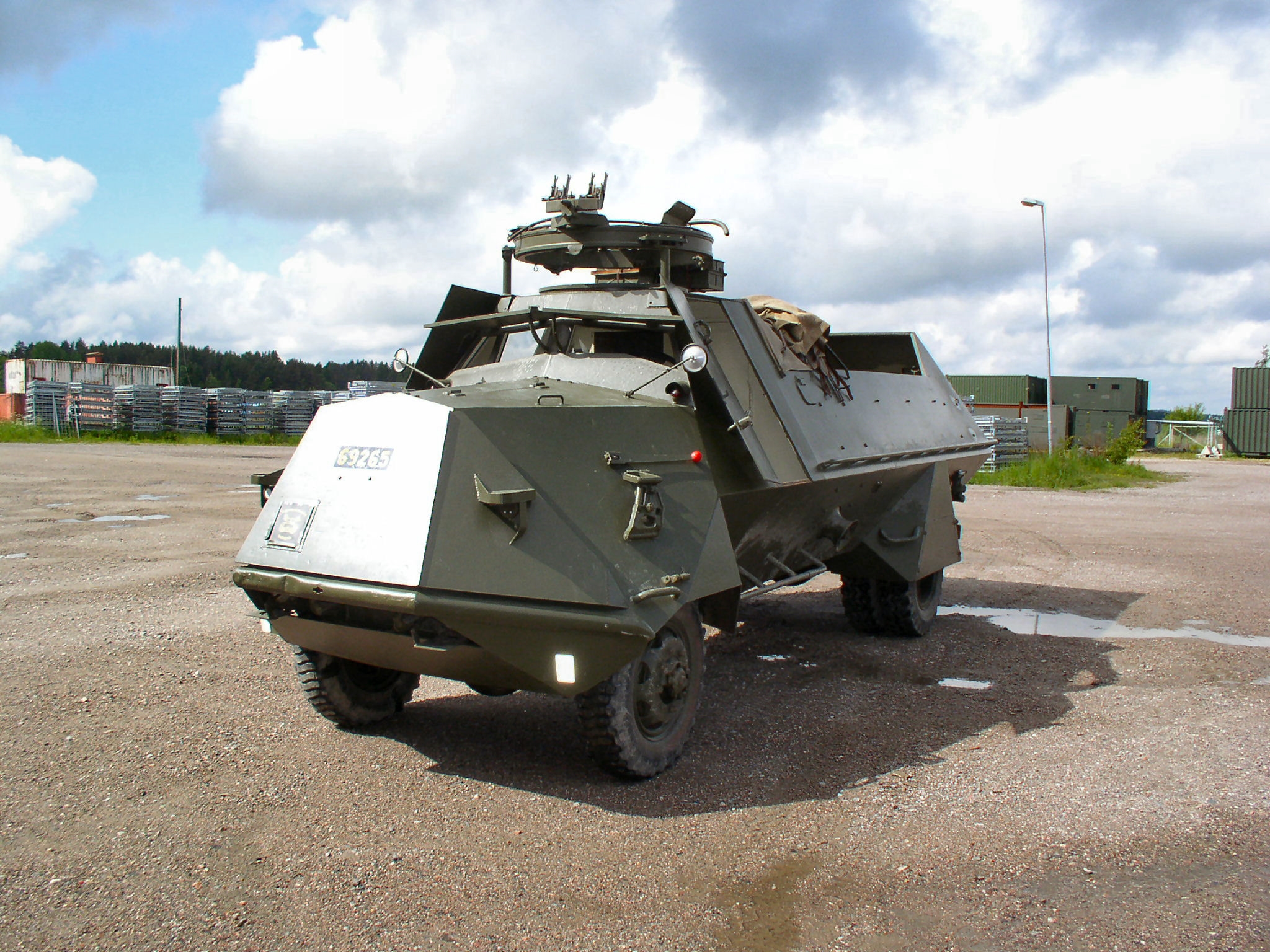
SKP M-42 | |
| Země | Švédsko |
| Typ | Obrněný transportér |
| Fotografii | Thord Wedman |
| Téma | Album 16 fotografií procházka kolem «SKP M-42» |
Fotogalerie SKP M-42, Terrängbil m/42 KP (Tgbil m/42 SKP/VKP), meaning “Off-road vehicle 42” with a secondary designation of “Scania, Bodywork: Armoured” or “Volvo, Bodywork: Armoured”, was the Swedish army’s first armoured personnel carrier, developed as a stop-gap measure during World War II. In 1941, when tanks were organized into a unit of their own, it was clear there was a desperate need for a troop carrier able to both keep up with the tanks and provide protection against artillery shrapnel and small-arms fire. Due to the war there were no international suppliers to buy from, so the only option was to develop a domestic solution. AB Landsverk designed an APC consisting of a chassis from a regular army lorry equipped with an armoured shell.
Zdroj: SKP M-42 na Wikipedii
Viz také:
Tá Terrängbil m/42 KP (tgb m/42 KP), meaning “terrain car m/42 KP” (KP standing for Karosseri Pansar, “Coachwork Armour”), was an early Swedish infantry fighting vehicle developed during World War II. It was essentially a flatbed truck with 4-wheel drive for off-road driving, fitted with an armoured body elongated over and around the bed, with a troop transport compartment behind the cabin for a squad of 16 soldiers.
Varianty:
Two base variants existed based on the chassis:
– Scania-chassis-based variant, designated the “tgb m/42 SKP” (Scania KP)
– Volvo-chassis-based variant, designated the “tgb m/42 VKP” (Volvo KP)
Technical Description:
The armoured body featured 8 to 20 mm (0.31 in to 0.79 in) thick welded sloped armour all around, making it effectively bullet-proof. For disembarking and boarding, the troop compartment had an armored hatch on each lower side of the vehicle, right in front of the rear axle wheels.
The troop compartment originally lacked a fixed roof and had partially open sides meant for the infantry to shoot from. Instead of a fixed roof, the back end of the body had full height sides so a tarpaulin could be fitted over the troop compartment between the cabin.
In 1983, most remaining vehicles were updated with a new fully enclosed troop compartment with firing ports and a back door for fast disembarking.
I když byla vždy určena pro pevnou výzbroj s kulatým otvorem o velikosti poklopu na střeše kabiny, vozidla zpočátku postrádala jakoukoli trvalou výzbroj a otvor ve střeše kabiny byl často přišroubován kovovým plátem. Místo toho byla vozidla vybavena úložným prostorem pro výzbroj, munici a vybavení pancéřových granátníků, jako jsou kulomety, ruční granáty a přenosné protitankové systémy.
Jedno vozidlo bylo brzy vyzkoušeno s 20mm automatickým kanónem akan m/40, ale první standardní pevnou výzbrojí byl jeden kulomet KSP M/39 umístěný v otočném prstenci věže v horní části kabiny. Tento kulomet mohl střílet buď nábojem do kulometu 8×63 mm M/32 nebo puškovým nábojem 6,5×55 mm M/94 v závislosti na hlavni.
In 1956, the existing vehicles received new armament in the form of twin ksp m/36 lv dbl (luftvärn dubbel) anti-aircraft machine guns. These could also fire the 8 mm m/32 and 6.5 mm m/94 rounds depending on the barrel (post 1972 also the 7.62×51mm NATO round).
During the 1983 REMO-upgrade, the ksp m/36 twin-mount was replaced with two 7.62 mm ksp m/58B light machine guns in single mounts, one on the cabin roof and one at the back of the new troop compartment roof. The new enclosed compartment also featured three portholes on each side of the vehicle for use as firing ports with assault rifles.
Počet zobrazení: 2250


